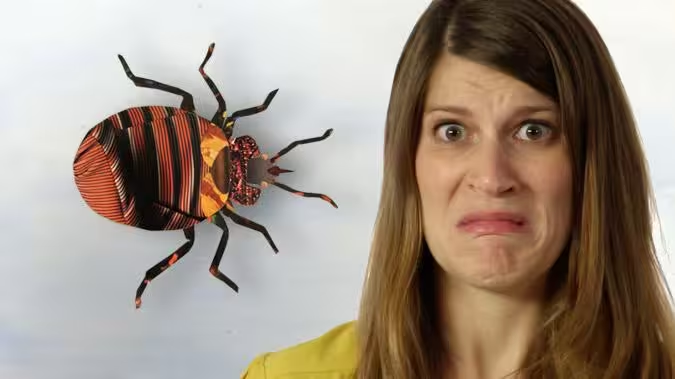Gross Science
Science, Sex Bias, and...Ruth Bader Ginsburg?
Season 2 Episode 6 | 3m 54sVideo has Closed Captions
Science has historically ignored females, whether they're insects, lab rats, or humans.
Science has historically ignored females, whether they're insects, lab rats, or humans.
Problems playing video? | Closed Captioning Feedback
Problems playing video? | Closed Captioning Feedback
Gross Science
Science, Sex Bias, and...Ruth Bader Ginsburg?
Season 2 Episode 6 | 3m 54sVideo has Closed Captions
Science has historically ignored females, whether they're insects, lab rats, or humans.
Problems playing video? | Closed Captioning Feedback
How to Watch Gross Science
Gross Science is available to stream on pbs.org and the free PBS App, available on iPhone, Apple TV, Android TV, Android smartphones, Amazon Fire TV, Amazon Fire Tablet, Roku, Samsung Smart TV, and Vizio.

Gross Science on Tumblr
Hi, I'm Anna. I host a YouTube series for NOVA, PBS Digital Studios, and WGBH on the slimy, smelly, creepy world of science. Here I post about all things bizarre and beautiful.Providing Support for PBS.org
Learn Moreabout PBS online sponsorshipThis video is about sex bias in science.
But to get there, we first need to talk about insect private parts... Like ya do.
I'm Anna and this is Gross Science.
Mantises are tricky to spot because they're masters of camouflage.
But for mantis researchers, finding them is only the beginning.
How do you distinguish one species from another, especially when they look so similar?
Usually, by looking at their penises.
Well.... sort of.
Male mantises don't exactly have penises.
They have these: a series of structures that help the male link up, hold on and pass sperm to the ladies.
And the shapes of these structures help researchers tell hundreds of otherwise similar species apart.
Now, this strategy makes some sense: male mantis parts do tend to be pretty conspicuous.
But what about female mantises?
Because of the focus on male genitalia, it's difficult to determine what species a lady mantis belongs to.
But, for the first time, researchers decided to see if female genitalia could be used to tell praying mantis species apart.
And what they found so far is that female genitals are indeed pretty different between groups.
In fact, by examining mantis lady parts, scientists just identified a whole new species.
They described this praying mantis using the female's unique genitals along with more traditional characterics, like where it lives, what it looks like and, yes, the male genitals too.
To honor this historic moment in mantis science, researchers named the insect Ilomantis ginsburgae after Ruth Bader Ginsburg, the Supreme Court justice who is a champion for women's rights.
It helps that this patch on the mantis's neck looks kinda like the lacy jabot that Ginsburg wears around her neck.
This female-based research approach is one small step towards making our exploration of the tree of life more rigorous.
Unfortunately, sex bias in research has an impact even closer to home.
It affects medicine, too.
Male lab animals are more often used in research than females because the ladies were thought to confound experiments with their pesky hormonal fluctuations.
But while studies in female mice suggest that this concern is totally unfounded, the bias persisted for decades.
For example, at least 63% of pharmaceutical drug studies surveyed from 2009 used only male mice.
And many scientific studies haven't even bothered to list the sex of the animals at all.
To fix this problem, the National Institutes of Health have just started requiring researchers to label the sex of their animals and to use females whenever appropriate.
But rodents are only half the battle.
Until recently, human females were also studied less than their male counterparts in medical research.
Some scientists hypothesize that this bias might explain why people with two X chromosomes more often experience adverse effects from medicines than people with an X and Y.
It wasn't until 1993 that the NIH actually required that women and people of color be included as subjects in clinical trials.
(And by the way, inequalities in medicine based on race could and should be its own Gross Science video.
So stay tuned.)
Anyway, there are many ways in which all humans are the same and require similar care.
But where there are differences between people-whether they're based on sex or race or something else-it's important for us to study rather than ignore them.
Otherwise, our medical system won't be able to adequately care for everyone.
And that's gross.
Ew.

- Science and Nature

A series about fails in history that have resulted in major discoveries and inventions.













Support for PBS provided by:

